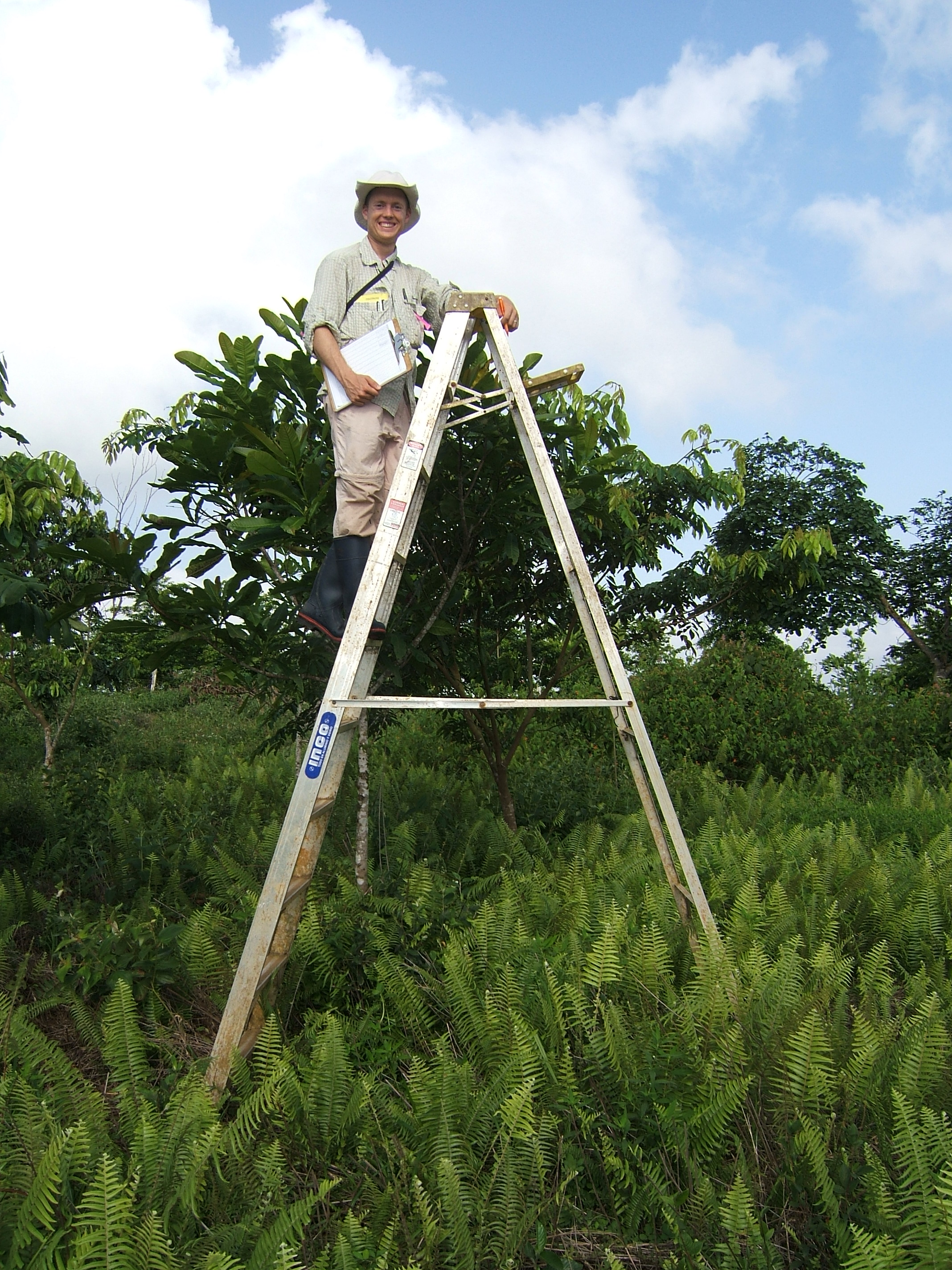Research
Representative recent publications
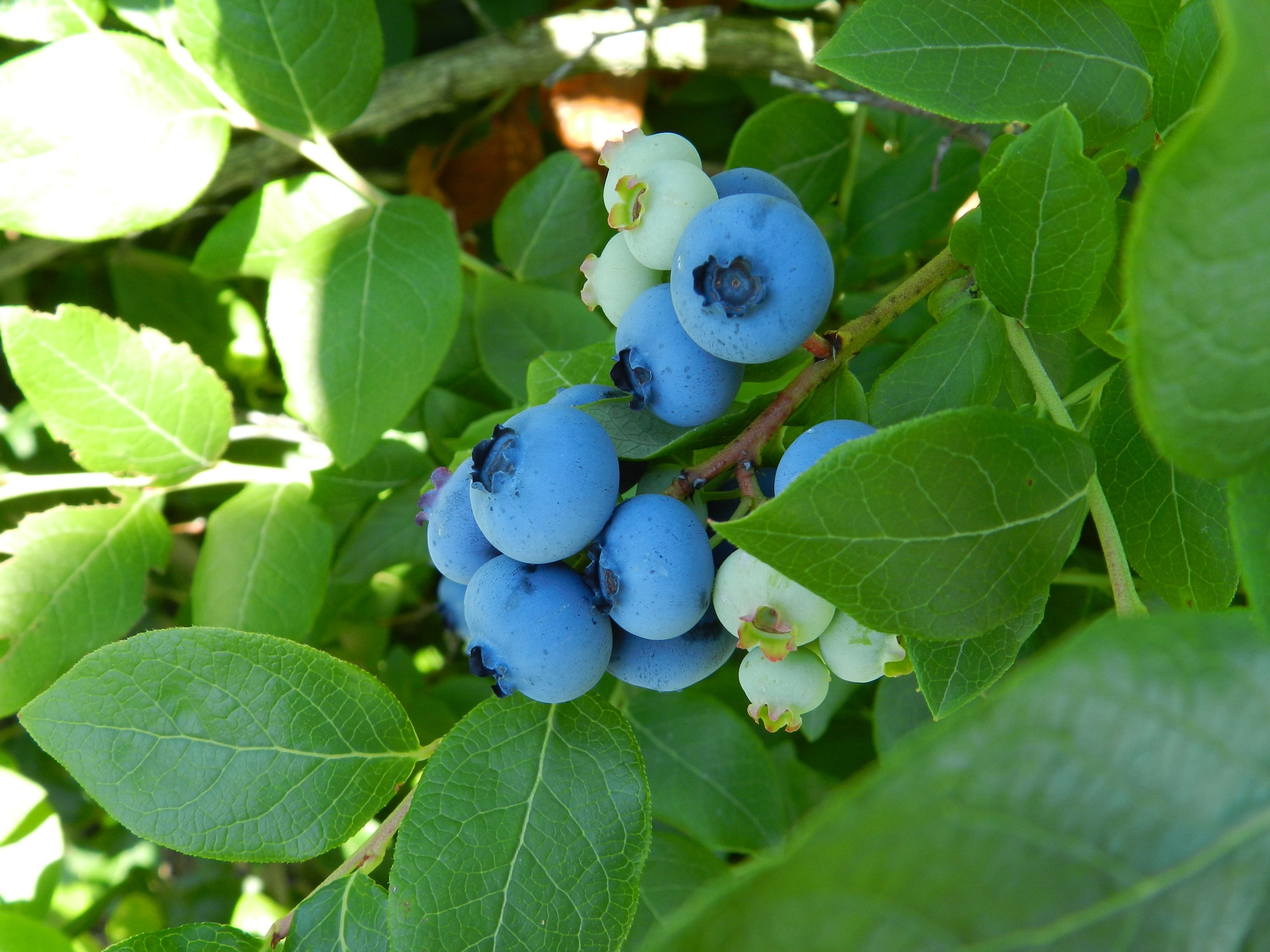
Lindell, C.A., N.L. Rothwell, S. Collino, and K. Powers. 2025. Netting reduces bird damage and Spotted Wing Drosophila in high-density sweet cherries with few effects on fruit quality Crop Protection. https://doi.org/10.1016/j.cropro.2025.107239
Wyckhuys, K.A.G., Abram, P, Barrios, E., Cancino, J., Collatz, J., Fancelli, M., Klein, A.-M., Lindell, C.A., Osterman, J., Pinto, M., Tang, F., Tena, A., Elkahky. M. 2025. Orchard systems offer low-hanging fruit for low-carbon, biodiversity-friendly farming. BioScience Biobiae140, https://doi.org/10.1093/biosci/biae140
Lindell, C.A., A. Irish-Brown, N.L. Rothwell, and A.E. Wallis. 2023. Pest and disease risk and management in high-density perennial crops: current knowledge and areas of future research. In press. Crop Protection 165 (2023) 106150 http://doi.org/10.1016/j.cropro.2022.106150
Hannay, M.B., M.E. Shave, O.J. Utley, S.A. Groendyk, and C.A. Lindell. 2023. Nest boxes increased presence of American Kestrels (Falco sparverius) in a blueberry production region despite low box occupancy. Journal of Raptor Research. https://doi.org/10.3356/JRR-21-80
Lindell, C.A and A.A. Dayer. 2022. duac035. Six principles for working effectively with landowners to advance bird conservation. Ornithological Applications. https://doi.org/10.1093/ornithapp/duac035
Williams, S. M. and C.A. Lindell. 2021. Context-specific behavior serves as a mechanism of interspecific cohesion in mixed-species flocks. Ornithology. https://doi.org/10.1093/ornithology/ukab046
Lindell, C.A. 2020. Supporting Farmer Adoption of Sustainable Bird Management Strategies. Human–Wildlife Interactions 14(3) Article 14.
Available at: https://digitalcommons.usu.edu/hwi/vol14/iss3/14
Roels, S.M., M.B Hannay and C.A. Lindell. 2019. Recovery of bird activity and species richness in an early-stage tropical forest restoration. Avian Conservation and Ecology 14(1):9 doi.org/10.5751/ACE-01330-140109
Lindell, C.A., R.A. Eaton, P. H. Howard, S.M. Roels, and M.E. Shave. 2018. Enhancing agricultural landscapes to increase crop pest reduction by vertebrates. Agriculture, Ecosystems, and Environment 257:1-11. doi: 10.1016/j.agee.2018.01.028
Shave, M.E., S.A. Shwiff, J.L. Elser and C.A. Lindell. 2018. Falcons using orchard nest boxes reduce fruit-eating bird abundances and provide economic benefits for a fruit-growing region. Journal of Applied Ecology 55:2451-2460. doi: 10.1111/1365-2664.13172
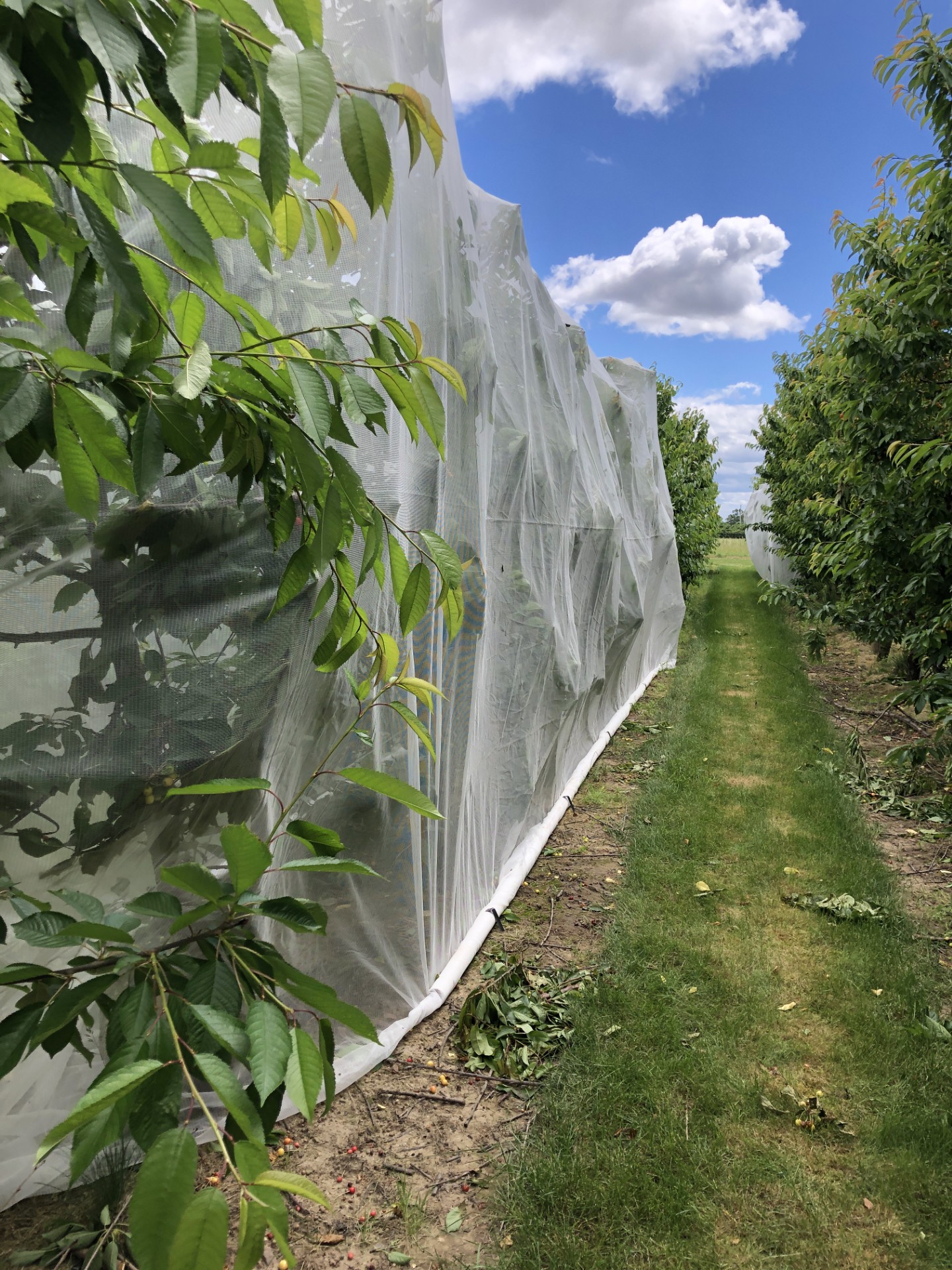
Above photo shows netting over high-density sweet cherries in Michigan. High-density crops, of low stature, are amenable to netting as a pest-management tool. High-density production is a growing trend in the U.S., with potential benefits for growers and the environment.
Birds damage to fruit crops. Fruit production is a critical component of the global economy and fruit consumption is important to improving human health. Production of blueberries, cherries, and grapes continues to increase and 'Honeycrisp' apple supply and demand are climbing. For example, the top ten cherry-exporting nations produce a collective annual yield valued at more than one billion dollars. An important problem for fruit growers is losses to birds that eat fruit. We work with fruit growers in Michigan to investigate ways to reduce bird damage to fruit crops. With a grant from the Michigan Tree Fruit Commission, through a Specialty Crop Block Program administered by Michigan Dept. of Agriculture, we are conducting a study to assess patterns of pest damage and potential management strategies in high-density sweet cherries and apples.
Linkages among farmer decision-making, beneficial bird species, and pest management
in fruit-growing systems. We are investigating how to make fruit-production regions more hospitable to natural
predators of crop pests. For example, by installing nest boxes for American kestrels,
we can attract these small predatory birds to cherry orchards and blueberry fields.
Kestrels deter fruit-eating birds and consume pest birds, mammals and insects. Former
graduate students Megan Shave, Melissa Brady, Olivia Utley, and Sarah Groendyk, and
postdoctoral associate Olivia Smith, have contributed to this work. Funding for this
project came from the National Science Foundation Dynamics of Coupled Natural and
Human Systems Program and the North Central Sustainable Agriculture Research and Education
Program.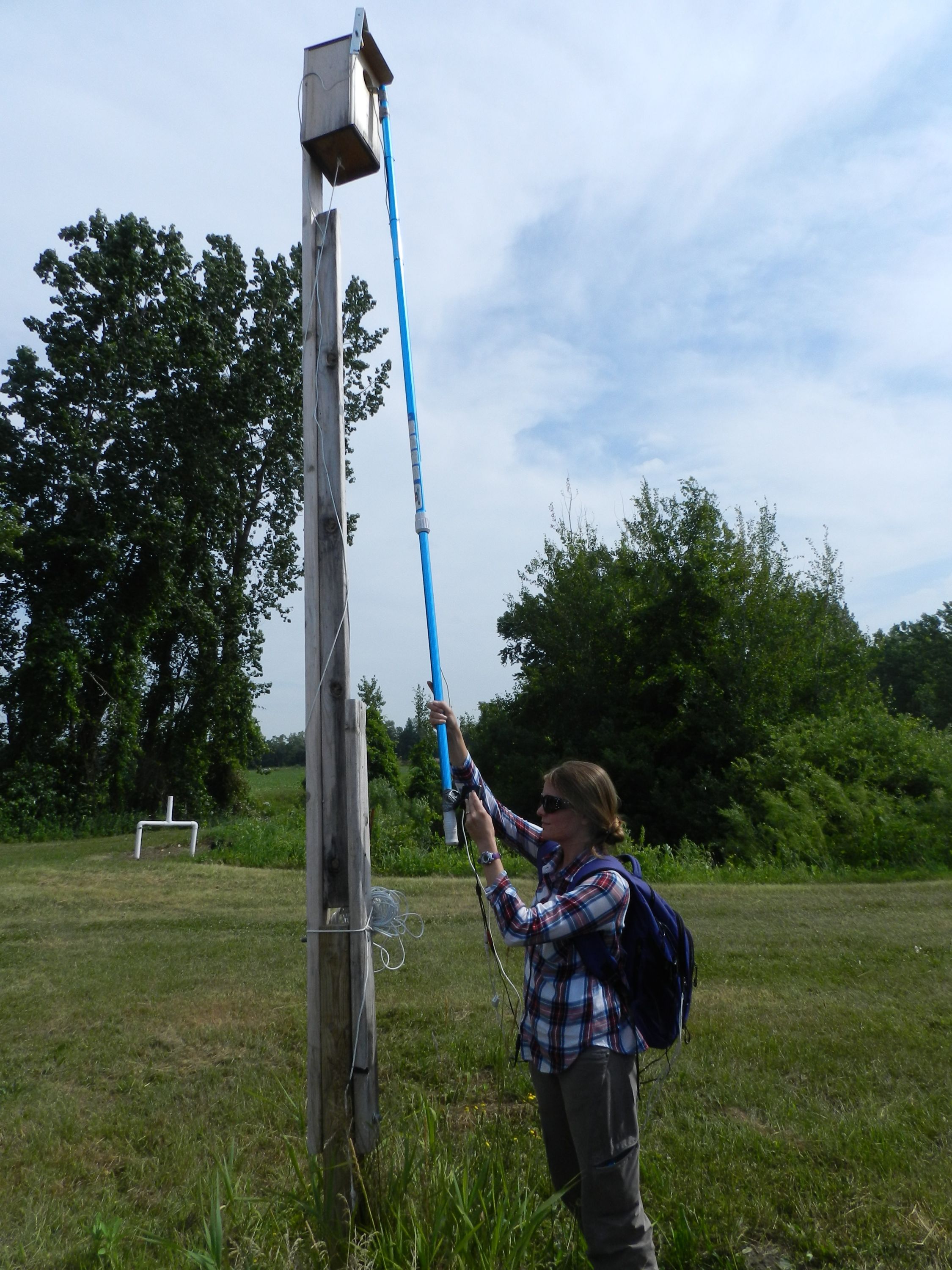
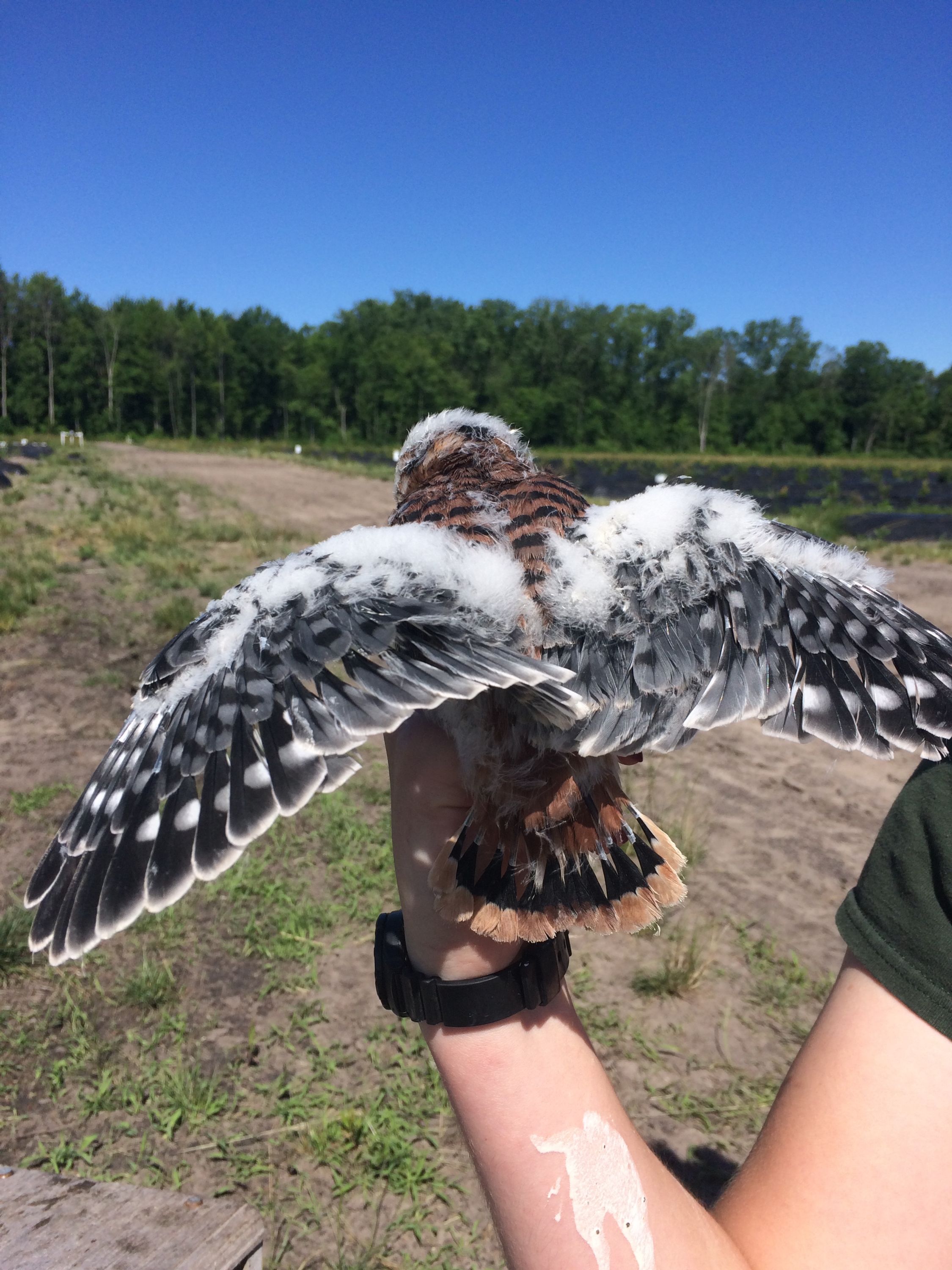
Birds in tropical forest restoration efforts. Deforested areas of the tropics are often abandoned, leaving large areas of degraded land that provide few ecosystem functions. For example, degraded lands may have high levels of erosion, reduced nutrients for plant growth, and provide little habitat for native animal species. Restoring these areas can lead to productive ecosystems. In addition, restoration projects allow us to test fundamental questions about the structure and functioning of ecosystems. Some of our work (e.g. Roels et al. 2019) showed that highly degraded tropical lands can show large increases in bird species richness and activity in just 4-5 years after initial planting of seedlings.
